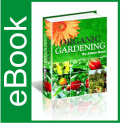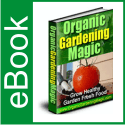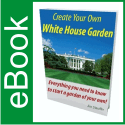Container Gardening in the Metro
Container Gardening in the Metro
Article by Gerardas Norkus
For most of us, gardening means two things: a) farm and b) soil. Hardly anybody knows that a nature-filled activity doesn’t have to be that far and tedious, and can actually take place at the heart of the dirty metro, right in the comforts of your condominium.
There are people who resort to other types of gardening especially when their vicinity calls for it. Most people who live in a condominium, hotel, or any place that is not suitable for the usual way of gardening go for some container gardening.
Container gardening is suitable for some indoor gardening. Through this, people can grow flowers and vegetables in their doorstep, deck, terrace, or lanai. Container gardening is applicable to just about any place that can be a great spot for a practical and pleasing presentation.
However, container gardening still requires the element of light coming from the sun so as to grow a healthy plant. That’s why it’s a must for a person who wants to try container gardening to consider light as the primary factor in gardening.
Container gardening, as the name suggests, uses containers instead of the usual seedbed or area typically used for backyard gardening. Barrels, hanging baskets, bowls, crocks, boxes for plants, flowerpots, sacks, bowls or peat moss containers are some of the containers that can be used in container gardening.
In choosing containers for container gardening, there are certain factors that need to be considered. Any containers can be used as long as it can provide good drainage. Containers with tight opening should be avoided.
When considering the material used in the make-up of the container, it’s best not to use terracotta pots and bargained plastic pots. Terracotta pots can dry out fast and becomes brittle; while plastic pots may weaken when exposed to sunlight.
The plant selected establishes sizes of containers that are to be used in container gardening. These containers should provide enough space for the plants to develop and grow roots.
The next thing to consider in container gardening is the mixture of soil. The soil mixture should be well ventilated and fluffy. It should be easy to drain excess water at the same time maintain abundant moisture. The soil mixture should be rich in nutrients.
Good soil mixtures can also impede root rot trouble. Root rot problem can be avoided if the same soil mixture is used all throughout the container.
According to some container gardening experts, soil mixtures or “soil less” mixtures bring about the best results. These soil mixtures can be obtained from commercial garden centers. Some of the soil mixtures that are used in container gardening are Metro Mix, Pro-Mix, Redi-Earth, Jiffy Mix, and Super Soil.
However, for budget conscious people who still want to try container gardening, you can opt for a more affordable soil mixtures. That is, you’ll make your very own soil mixtures.
Homemade soil mixtures are composed of one part of sharp sand or vermiculite, one part potting soil, and one part compost. If you’re thinking of a hanging basket for your container gardening, the soil mixture is more of lightweight materials. The mixture is composed of equal parts of vermiculite, peat moss, and perlite.
Generally, since container gardening uses containers that have holes for water drainage, water retention is not that high. That’s why container gardening involves a lot of watering especially during the hot season.
Fertilizers are also important in container gardening. Though, this must be applied in considerable proportions since overuse of fertilizers can do more harm than good. Too many fertilizers may smolder and destroy your plants.
The last thing to consider is the type of plant you will use in your container gardening. Basically, container gardening doesn’t need a special type of plant. In fact, plants that grow in a typical backyard garden can also be used in container gardening.
If you would like to grow vegetables, you may opt for green onions, beans, lettuce, eggplant, tomatoes, squash, parsley, radishes, and peppers. These are the vegetables perfectly fitting for container gardening.
If you want some flowers, you can go for Dusty Miller, Geranium, Begonia, Candytuft, Chrysanthemum, or Shasta Daisy. Any type of flower is suitable for container gardening.
You can also grow herbs in containers like basil, anise, dill, coriander, and chervil. You may also want to try growing chives, mint, tarragon, thyme, fennel, and caraway. Using herbs in container gardening will not only offer you with a beautiful display but can also provide you with useful herbs you can instantly use in your cooking. What’s good about that is that you get it fresh and absolutely free.
That’s why most people who go for container gardening do not only see this as a hobby or a recreational activity. Most of them realize that this can also be profitable and practical. Vegetables and herbs that grow in containers can be instant sources of ingredients in your recipes.
So, for people who still don’t know the benefits container gardening brings, now is the time for you to find it out.
Container gardening is definitely a feasible activity that brings about a thousand benefits right in the heart of the busy metropolis.
About the Author
Subscribe to “Gardening Secrets Unearthed” 7-part e-mail course from http://GardeningSecretsAndTips.com! Discover the keys to having a garden a professional landscaper would envy.

 January 3, 2012
January 3, 2012 







